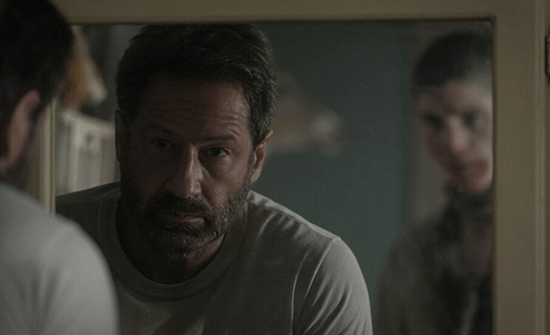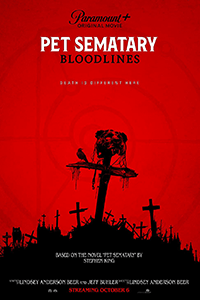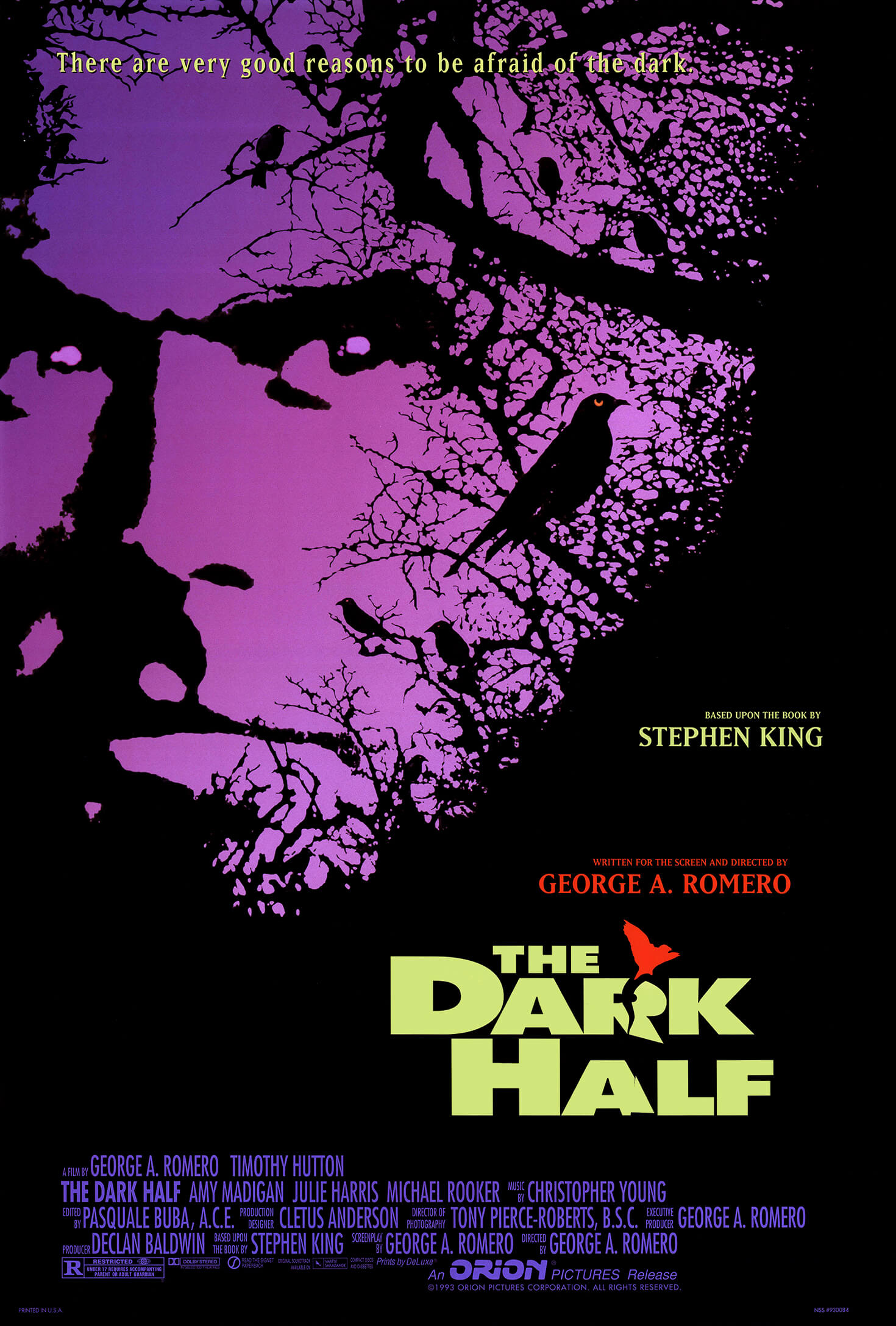
Pet Sematary: Bloodlines
By Brian Eggert |
“Sometimes dead is better,” indeed. Hollywood has tried to breathe life into Stephen King’s best book, 1983’s Pet Sematary, in cinematic form, twice. Both times, the first in 1989 and the second in 2019, resulted in disappointments. Mary Lambert’s initial attempt holds some credibility for Fred Gwynne’s Maine accent as Jud, the kindly old neighbor with a dark secret, and a creepy kid performance by Miko Hughes. But the less said about its sequel, Pet Sematary Two (1992), the better. For the newer version, directors Dennis Widmyer and Kevin Kölsch sought to play with their audience’s expectations and pivoted, but not in a manner that proved rewarding, only to produce another waste of rich material and a great cast (John Lithgow, Amy Seimetz, Jason Clark). Now debuting on Paramount+, Pet Sematary: Bloodlines offers a prequel to the 2019 film, answering questions that were best left a mystery. When did Jud first learn about the “sour” ground in Ludlow that revives anything buried there? Do the townsfolk know about it? Who first discovered the cursed cemetery? The film digs to answer these questions and others, but not deep enough.
Set in 1969, the story finds the young Jud Crandall (Jackson White), a local football star with a bright future, aching to get out of Ludlow with his girlfriend Norma (Natalie Alyn Lind). Jud’s influential father (Henry Thomas) saved him from Vietnam by buying him out of the draft, but Jud resents this. He and Norma plan to join the Peace Corps in Michigan. “And then…” Norma says wistfully, “the world!” But small towns have a way of never releasing their grip on those who don’t leave when an opportunity arises. After all, we already know that Jud spends most of his life sitting on a porch in Ludlow, drinking beer and smoking cigarettes, stewing about what dark magic lies beyond the woods in that old Miꞌkmaq burial ground. In true prequel form, Pet Sematary: Bloodlines has only so much room to maneuver, serving as an exercise in filling in the blanks. With that in mind, we watch passively as events conspire to keep Jud in Ludlow. Cue Creedence Clearwater Revival’s “Bad Moon Rising.”
The screenplay by first-time director Lindsey Beer and her co-writer Jeff Buhler doesn’t waste time with pesky notions of character development before getting into the nitty-gritty. Among the first images is David Duchovny’s Bill dragging a body to the “Pet Sematary,” just past Little God Swamp and over the deadfall built to keep people away. Bill’s son Timmy died in Vietnam, presumably, but with the help of the evil lurking in the ground, Timmy will soon be back. Something also happened to Bill’s dog that required the Pet Sematary treatment, but what exactly occurred, along with many other details that might’ve fleshed out the story, feel like they were excised by Beer and her editors (Ken Blackwell, Jan Kovác). Regardless, just as Jud and Norma start their journey out of town, they nearly run over Bill’s dog, which looks bloodied and disturbed. They walk the animal back to Bill’s only to find Timmy (Jack Mulhern) looking pale, apparently back from the war but actually back from the dead. That’s when the dog attacks Norma, requiring a visit to the hospital and a delay of their Michigan trip.
 Beer establishes a small ensemble of supporting characters, most present only to bolster the body count. Fortunately, the cast consists of strong character actors, who, despite having little to do in their roles, give the material a touch of credibility. Pam Grier plays Marjorie, a mail carrier who, as mail carriers do, gets attacked by a dog. Forrest Goodluck (from How to Blow Up a Pipeline) and Isabella Star LaBlanc have supporting roles as Manny and Donna, respectively, local Native Americans who smoke pot in a sunflower field and have a spiritual connection to what’s happening. Samantha Mathis appears as Jud’s mother, but either Beer whittled the part down in the editing room or it’s wholly underwritten—she’s barely in the movie. As for the main cast, White forgoes the distinct Maine accent, just as his counterpart, Lithgow, did in the 2019 film, but he makes a sturdy leading man. Lind’s thoroughly modern appearance and sensibilities feel like anachronisms. Duchovny appears stiff and expressionless, showing up for the paycheck. The best performance belongs to Thomas, who brings the same committed severity he shows in so many Mike Flanagan projects, but the script isn’t capable of the same gravitas.
Beer establishes a small ensemble of supporting characters, most present only to bolster the body count. Fortunately, the cast consists of strong character actors, who, despite having little to do in their roles, give the material a touch of credibility. Pam Grier plays Marjorie, a mail carrier who, as mail carriers do, gets attacked by a dog. Forrest Goodluck (from How to Blow Up a Pipeline) and Isabella Star LaBlanc have supporting roles as Manny and Donna, respectively, local Native Americans who smoke pot in a sunflower field and have a spiritual connection to what’s happening. Samantha Mathis appears as Jud’s mother, but either Beer whittled the part down in the editing room or it’s wholly underwritten—she’s barely in the movie. As for the main cast, White forgoes the distinct Maine accent, just as his counterpart, Lithgow, did in the 2019 film, but he makes a sturdy leading man. Lind’s thoroughly modern appearance and sensibilities feel like anachronisms. Duchovny appears stiff and expressionless, showing up for the paycheck. The best performance belongs to Thomas, who brings the same committed severity he shows in so many Mike Flanagan projects, but the script isn’t capable of the same gravitas.
Pet Sematary: Bloodlines feels like a movie that came apart in post-production. Hints at underdeveloped subplots suggest this 84-minute feature was once much longer and character-driven. There’s a truncated sequence about the Europeans who invaded the Mi’kmaq territory in 1674 and “settled” the land, detailed in a diary that has been kept secret for centuries. But it’s clunkily patched into the movie as an afterthought. It barely serves its purpose to establish how, even in the 1960s, the locals uphold the founders’ pact to keep the monstrosity contained. They know “it’s back,” and they band together to stop the evil in true Stephen King fashion. However, so few characters are well-developed, making it impossible to care. Instead of building tension, the movie functions as a series of strung-together scenes of violence. So the climax underwhelms, partly because the posse of armed townspeople determined to stop the evil couldn’t possibly be successful given the movie’s prequel status. Sure enough, when they venture into the tunnels of cursed earth beneath the cemetery, the undead Timmy, moving with the speed and killing efficiency of a ninja, makes short work of them.
Beer’s film suffers from the same malady as other adaptations of King’s book—it’s impatient. Rushing to get to the juicier scenes, it ignores that much of the text takes place in the main character’s head, establishing the grief-stricken mindset that drives someone to defy the laws of life and death to assuage their pain. Instead, Pet Sematary: Bloodlines plays like a zombie movie, with Thomas declaring, “You must aim for the eyes” to kill someone resurrected from the burial ground, similar to the refrain “shoot ‘em in the brain” from countless zombie movies. The outcome looks professional thanks to cinematographer Benjamin Kirk Nielsen, and the gore is refreshingly practical instead of overly dependent on CGI. But the movie isn’t scary or particularly involving because it has no time for characters, mood, psychology, or suspense. Rather, it’s a movie too eager to get to elaborate kills, leaving little else to draw the viewer’s interest. Another disappointing take on King’s masterpiece, its only lasting effect is the question of why no movie has done this story justice.

Consider Supporting Deep Focus Review
I hope you’re enjoying the independent film criticism on Deep Focus Review. Whether you’re a regular reader or just occasionally stop by, please consider supporting Deep Focus Review on Patreon or making a donation. Since 2007, my critical analysis and in-depth reviews have been free from outside influence. Becoming a Patron gives you access to exclusive reviews and essays before anyone else, and you’ll also be a member of a vibrant community of movie lovers. Plus, your contributions help me maintain the site, access research materials, and ensure Deep Focus Review keeps going strong.
If you enjoy my work, please consider joining me on Patreon or showing your support in other ways.
Thank you for your readership!
Brian Eggert | Critic, Founder
Deep Focus Review







